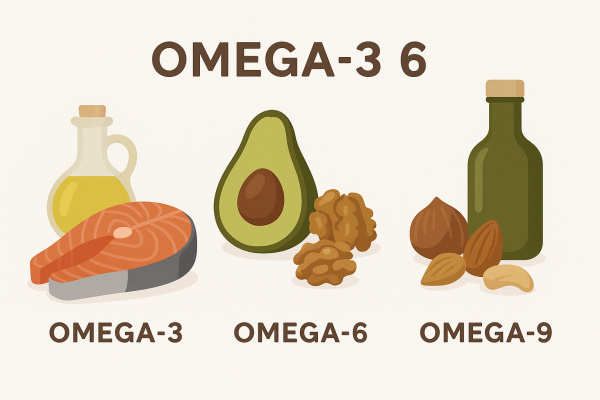Omega-3, 6, and 9 fatty acids: health benefits and main sources

Omega-3, 6, and 9 are essential fatty acids that support the heart, brain, skin, and immune system. Learn why they are important and which foods contain them.
Fats in our diet are often perceived as harmful, but in fact, they vary. Unsaturated fatty acids — omega-3, 6, and 9 — play a key role in the health of the body. They support the cardiovascular system, promote blood vessel elasticity, reduce the risk of stroke and dementia, and improve the condition of the skin, hair, and nails.
Omega-9 has anti-inflammatory properties, helps fight rashes, and is partially synthesized by the body itself. Sources: olive and rapeseed oil, avocados, nuts, fatty fish.
Omega-3 and Omega-6 are not produced by the body, so they must be obtained from food. For maximum benefit, they should be in a ratio of approximately 4:1. Omega-3 is especially important: its deficiency can manifest itself in fatigue, joint pain, and low mood. Main sources: fish (salmon, sardines, mackerel), flax seeds, chia seeds, walnuts.
Saturated fats, on the other hand, are harmful in large quantities: they increase “bad” cholesterol, promote fat deposition, and cause inflammation. Therefore, nutritionists recommend limiting them to 7% of the daily diet and increasing unsaturated fats to 15-20%.
Regular consumption of foods containing omega-3, 6, and 9 helps maintain energy, youthfulness, and longevity. They are especially important for pregnant and lactating women, as they ensure the proper development of the child.
